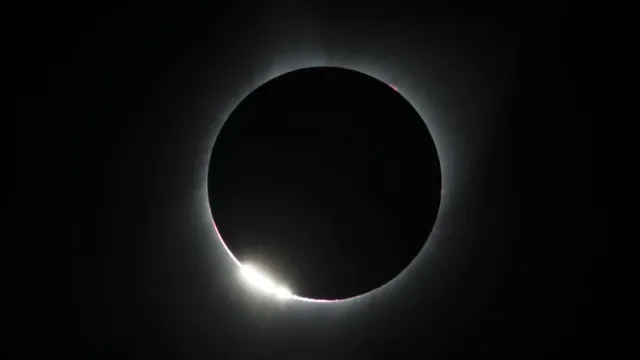People are in for a triple celestial treat this month with a solar eclipse and a lunar eclipse set to happen and Mars expected to come closest to Earth than it has in nearly two decades.July promises to be a treat for stargazers across the world with a line-up of a triple celestial delight – a partial solar eclipse on Friday (July 13), a lunar eclipse on the night of July 27 while Mars will come closest to earth in 15 years on July 31.
A solar eclipse takes place when the moon traverses between the earth and the sun, blocking it from view, partially or fully.
The solar eclipse occurring on Friday is a partial eclipse that will be visible mostly over open waters, and from the southern parts of Australia and New Zealand.
The real treat will be the lunar eclipse later this month, which will be the longest total lunar eclipse of this century.
A lunar eclipse takes place when the Earth comes between the Sun and the moon. An umbral shadow is an area where the Earth has blocked off all direct sunlight from reaching the moon.
When it enters the totality phase, the moon is completed inside the earth’s shadow and acquires a reddish hue, prompting many to call it a ‘blood moon.’
The total eclipse of the moon, when it is completely under the Earth’s shadow will last one hour and 43 minutes.
This rare celestial event will be visible across Europe, Africa, Asia, Australia and South America. In India, it can be seen after 11:54 pm IST on July 27.
Four days later, another spectacular celestial event is set to play itself out.
On July 31, Mars, the fourth planet from the Sun, will be 57.6 million km from Earth, the closest it has been since 2003 when it came within 55.7 million km, the nearest in almost 60,000 years.
“The Red Planet will be at its brightest since 2003, when Mars made its closest approach to Earth in almost 60,000 years since September, 24, 57617 BC,” Dr Debiprosad Duari, director, Research & Academic, MP Birla Institute of Fundamental Research told PTI.
Mars will be visible in the night sky after sunset till sunrise from everywhere in India if the sky remains clear.
“Since it will be quite close to Earth by that time, it will appear very bright and will be visible roughly after sunset and will remain in the sky till sunrise. The Red Planet will shine very prominently in our night sky… it will be easier to see it clearly with telescopes or even with the naked eye,” Duari said.